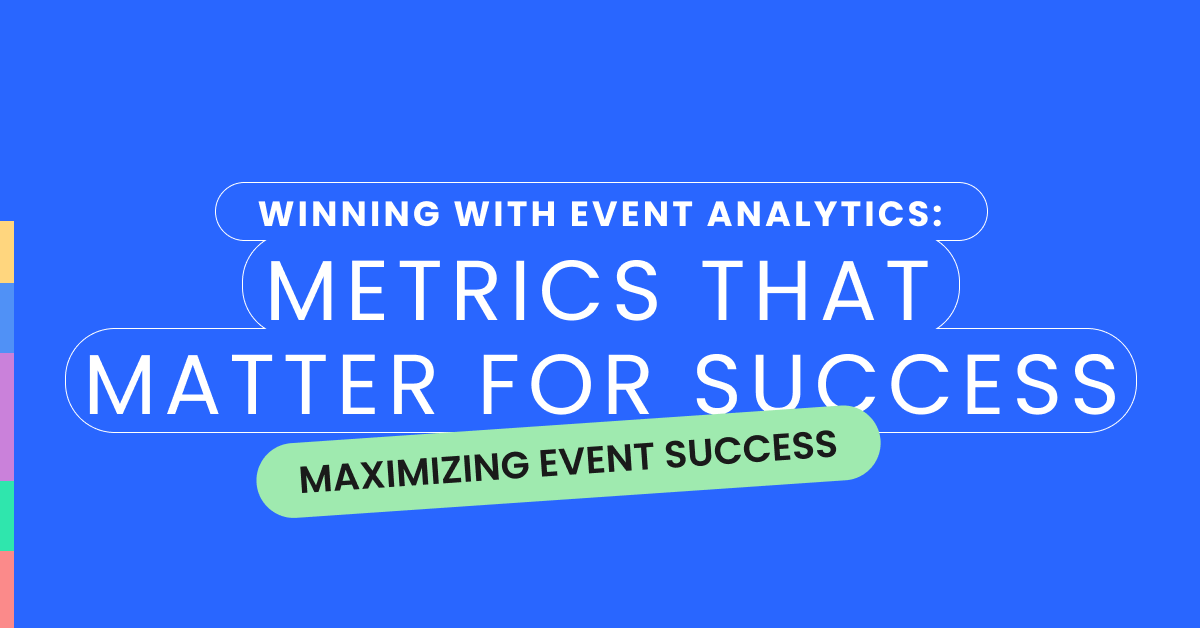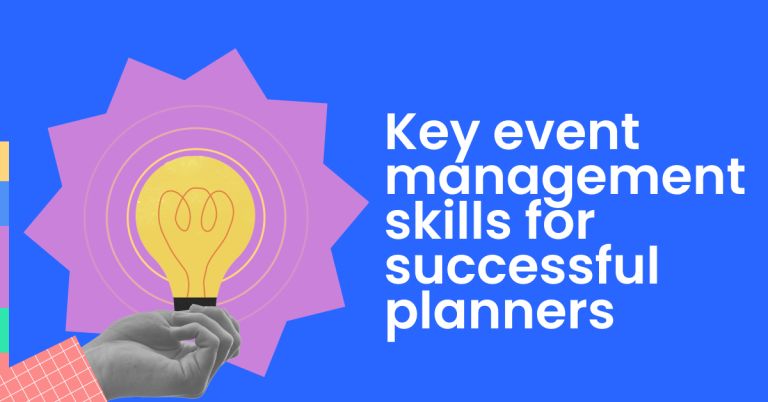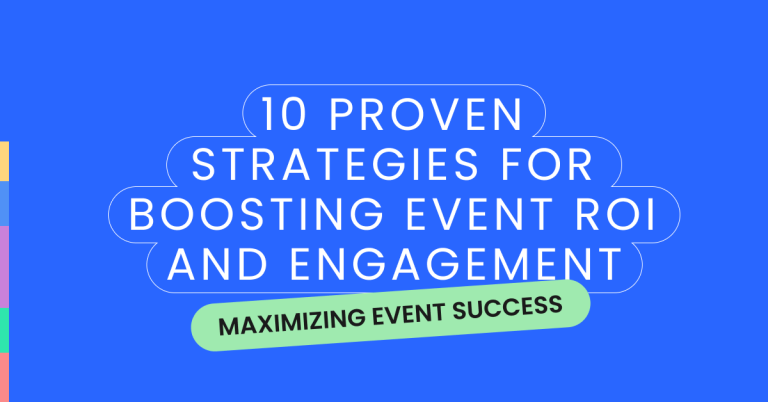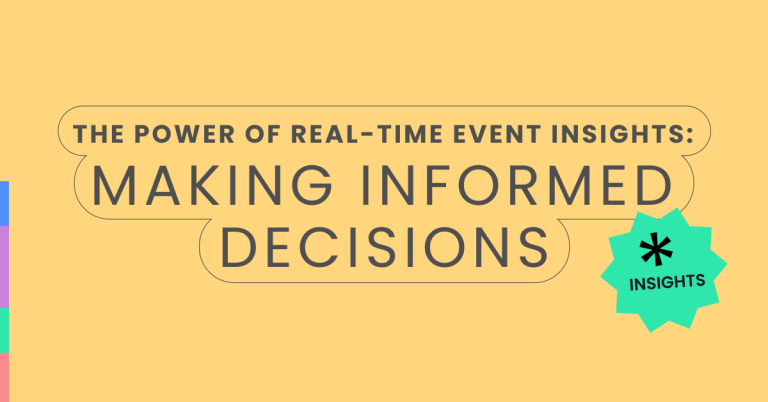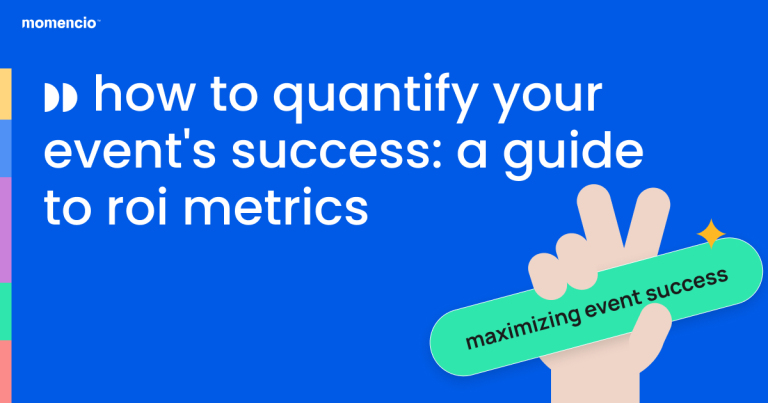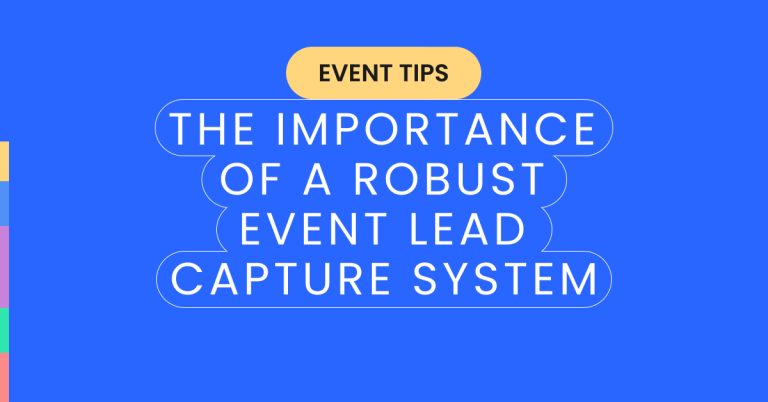Do you recall having assessment sessions in school when you had to provide your comments on everything? Its goal is to perform program evaluations, enhance program effectiveness, and/or guide programming choices. You need analysis to understand things better and develop and perform better in the future.
Everything requires analysis. It can be as basic as making a cake and then analyzing the whole process to determine the ups and downs. Similarly, reviewing your event is critical if you are an event manager.
Evaluation is often forgotten after the occurrence. However, event management offers the organization with several viewpoints. The analysis session can help event planners learn from their mistakes and better understand operational success, among other things.
Benefits of tracking event metrics
Measuring event performance using event metrics is critical to demonstrate the value you produce for your company via events.
Here are some more advantages of recording event metrics:
1. Enhance future events
Improve future event engagement to attract more guests and keep them engaged during and after your events.
2. Inform your next best course of action.
They can choose the best next step by delivering thorough event metrics, including first-party data on your guests, to your marketing team and sales agents.
3. Encourage a data-driven culture.
Measuring event success metrics regularly instills a data-driven approach. And if you have a completely integrated event tech stack that gathers data for you, this is straightforward.
The Impact of Event Planning on ROI
Successful events are methodically planned and performed; they do not happen by luck. Event planners devote substantial time and money to ensuring every element is in place, from selecting the perfect location to curating interesting material.
However, measuring the event’s performance and influence on your ROI might be difficult without a deliberate approach to event planning.
The foundation of every successful gathering is event planning. It entails meticulous considerations such as conference planning and trade show success, where choices made at this stage can have a big impact on the overall success of your event.
To properly grasp the worth of your event, you must thoroughly assess its effect. This is where event analytics can help.

1. Compare registration with attendance
Just because someone registers for your webinar does not guarantee they will attend. The gap between these figures might reveal a lot about the effectiveness of your event marketing campaign.
For example, if just one-third of those who register attend your event, you can reconsider how you promote future events. If, on the other hand, 75% of people who signed up log in, your marketing is most certainly beneficial. In any case, this is useful knowledge for future occurrences.
Another interesting statistic is how many event participants are first-time visitors vs. repeat clients. This might help you categorize your audiences for more efficient post-event email marketing.
2. Monitor attendee engagement
Engaged audiences result in increased conversion rates, brand loyalty, and more successful events overall.
So, how is event participation measured? You may think that since in-person guests are easy to monitor, tracking their participation is simpler.
However, this isn’t always the case, and here’s why: although in-person events enable coordinators to monitor guests superficially, coordinators can’t follow attendees’ every move and know precisely how they spend their time—or how far down the sales funnel they’ve walked.
CEPs can collect event engagement information on all participants in real-time, providing event managers with comprehensive, precise data that an in-person event cannot provide.
3. Assess conversion rates
Lead generation is a popular event metric, and it’s easy to see why: you want to pique visitors’ interest in your business and turn them into customers.
But how many of your leads are prospects? Your event must create quality leads to earn income or establish brand loyalty. Events that fail to generate real interest and action waste time and money.
To attract and measure qualified leads, establish event-specific calls to action, nurture leads via targeted email campaigns, or deliver tailored material during the event to help participants form true connections. These clever strategies link viewers to your brand.
4. Determine the revenue
Events provide possibilities for your organization to engage audiences and enhance revenue. Seeing an increase in income during and after your event indicates that it was a success.
In addition to ticket sales, ad income, and sponsorship figures, your company’s customer relationship management software can give a full breakdown of sales conversions that occurred as a direct consequence of the event.
And, if income was lower than expected, you can go deeper into your event analytics to decide how to enhance marketing efforts and conversions for future events.
5. Survey Results
Attendee feedback is one of the most effective methods to gauge webinar effectiveness. An engaged audience will be more than happy to respond to your polls and surveys. If they aren’t, you can have targeted the incorrect audience, or your guests didn’t find your material intriguing.
Include that information in future webinars when you get results from your polls and surveys. What did your event’s attendees think? Did they learn what they expected to learn? Do they have any recommendations about how you might improve? Which portions of your presentation did they appreciate and connect with the most?
If you can receive answers to these questions, you can create stronger webinars in the future, propelling your company ahead more quickly.
6. Returning Attendees
Your team most likely plans recurrent activities, whether monthly, yearly, or even biannually. The number of repeat visitors attending future events is a useful statistic to track. Returning attendees will demonstrate if your event material is engaging with your target demographic and will provide you with an indication of the value you are producing for them. A large percentage of repeat attendance indicates that you’ve identified the winning recipe.
Using momencio for Event Analytics
The correct tools and technology are required to perform successful event analytics. momencio, a complete event management tool, can assist you. momencio streamlines event planning, administration, and analytics with its features and capabilities, enabling you to concentrate on what matters most – delivering a great event.
momencio provides real-time analytics to event planners and field marketers by merging event management and event technology. Momencio provides a comprehensive approach to event analytics, from attendee engagement to lead creation and post-event follow-ups.
Also Read: The Power of Real-Time Event Insights: Making Informed Decisions
